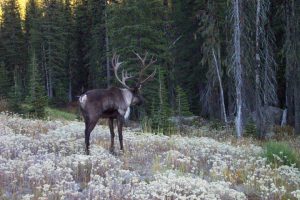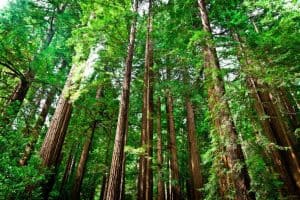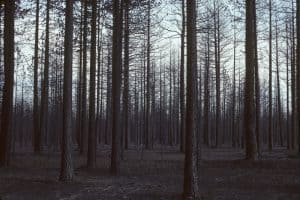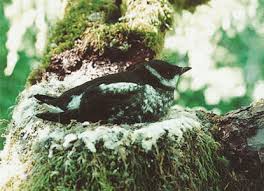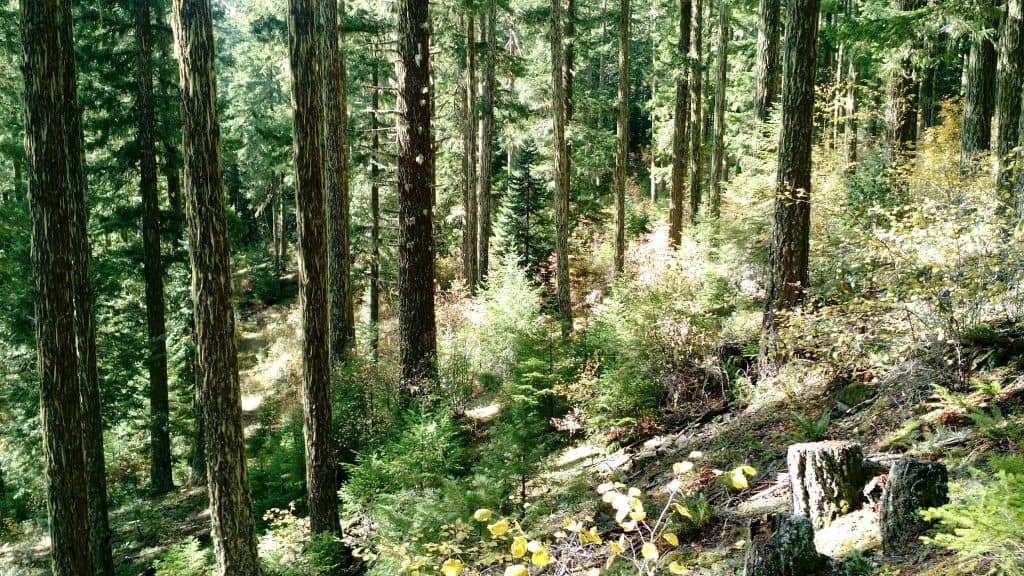
We’ve talked about the People’s Research Priorities before on this blog, but this is the first time we’ve posted research prioritized, funded and carried out by a member of the public here. The author, Allan Baumann graduated from O.S.U. in 1979 in Forest Management. He worked with O.S.U. researchers, the F.I.R. project and then on the Umpqua NF for 31-years. He held a variety of roles in Silviculture, Fire Ecology, Timber Pre-Sale and Sale Appraisals and research. Perhaps this fits into the category of “Seniors are doin’ it for themselves” to paraphrase the Eurythmics song.
The Stand:
Lynx #1 is a 3.64 hectare (9-acre) partially-harvested stand with light-moderate entries in 1976 and 1996. It is an average Site Class Four quality stand. The stand is at about 1,000 meters elevation (3,300 feet) and is located on Panther Ridge above Steamboat, Oregon. There are three main age classes of old-growth present in the overstory: 150-175 years, 300-350 years, and 500+ years of age.
The Growth:
Similarly, the average tree weight increased from 3.13 to 4.17 Mg_Tree, while the average tree increased its diameter by 3.56” over the 40-year period. Remarkably, 89% of the 440 live-trees measured exhibited moderate-fast growth rates following both stand entries at 20-year intervals. At its current growth rate, the 440 live old-growth trees will “grow back” carbon, totaling what was removed by harvest in 1996, by the year 2020. There was 550.7 Mg_Ha of biomass measured before
harvest in 1996. The partial removal in 1996 led to a 15% reduction, or removed 84.2 Mg_Ha of biomass. In 2016, there was 538.64 Mg_Ha of biomass measured in the old-growth trees in Lynx #1; with Lynx stand #1 actively growing at 3.62 Mg_Ha per year.
Older Trees Grow Differently:
Furthermore, it is key to understand that old-growth trees seemingly grow differently than young-growth. The study measured key structural attributes like bark thickness, limb diameter, crown form and noted any visible tree pathogens like conks, fire scars, broken tops or multiple tops. Conventional young-growth thinking is that key crown structural form is important for adequate tree development; e.g. having crown ratios greater than 40% for Douglas-fir and not having a one-sided form.
In testing these hypothesis against the Lynx old-growth some interesting results were found. These might influence future forest management for improving the resilience, health and sustainability of these valued genetic-legacy trees of the forest. An in-depth look at one-sided crown trees found that while 24% did have poor growth rates, 76% had moderate or fast growth rates. Testing trees with less than 20% crown form found only 13% growing poorly, while 87% grew moderate-fast over the 40-year period. Testing trees with both poor crowns and one-sided structure, found that 23% had poor growth and 77% had moderate-fast growth rates.
Further analysis was done on trees with visible conk indicators. Fifty-one (51) trees with Phellinus pini were measured and while 26% had poor growth rates, 74% had moderate-fast growth rates. Six (6) trees with Phaeolus Schweinitzii were measured and 33% had poor growth rates and 66% were unexpectedly growing moderate-fast. Implications for this additional growth are not normally considered.
Lynx #1 white paper finala link to the entire white paper.
Here are some caveats from the author:
It is important to know that my study only followed the 471 old-growth trees in the 9-acre stand. There is a healthy intermediate layer in this all-aged stand with a 90-year cohort and now a 20-yr and 40-yr. cohort after two light partial harvests. These were not measured or factored into any carbon calculation for my paper, though it would be very interesting to sample and tabulate.
I have been asked to go back and get 50 trees as a control in an untreated area nest to this stand. I plan to do that this year and then recalculate their carbon sequestration over the same time frame given the proximal site and weather conditions.
